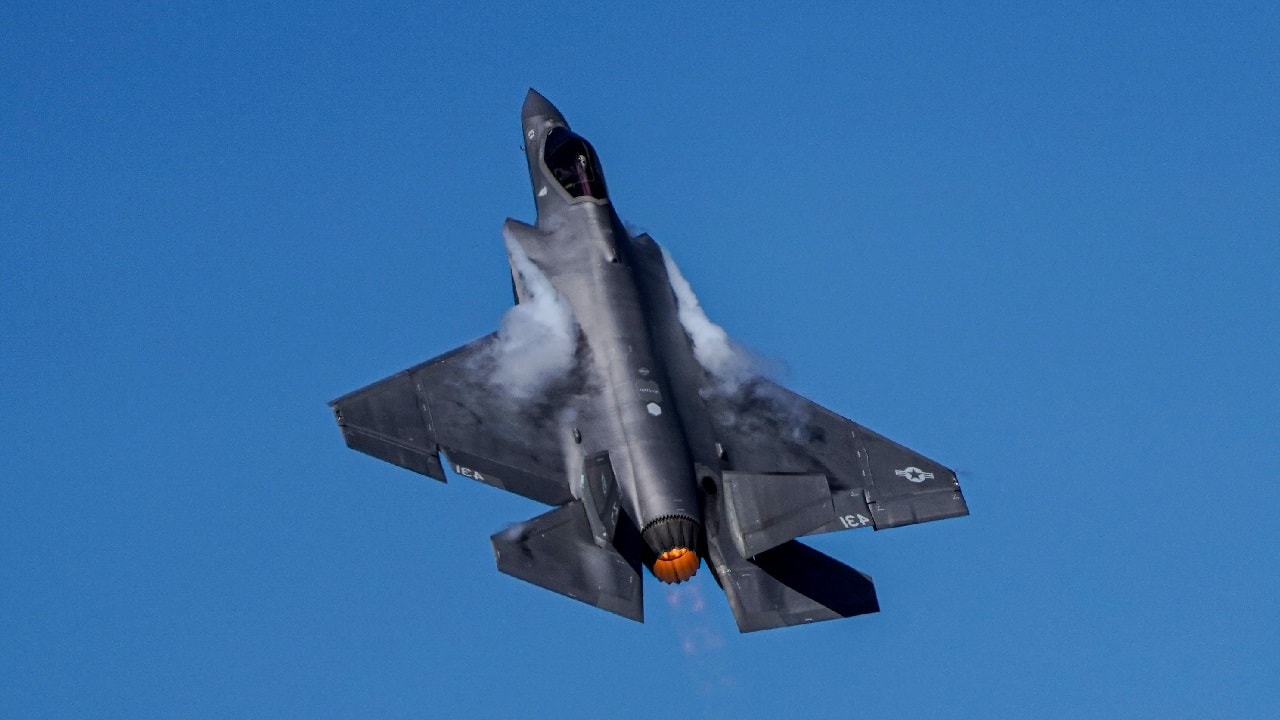On Aug. 1 in the German town of Weeze, executives, politicians, and members of the military broke ground on a new factory for arms manufacturer Rheinmetall. The German company is building the factory to produce fuselages for F-35 stealth fighter jets. With a price tag of approximately $219 million, the factory is a significant investment in the F-35, and in jobs for the region. Fuselage sections will roll off a line manned by up to 450 workers who might be supported by as many as 1,500 additional personnel.
Rheinmetall is expecting to produce around 400 components. Some will go to the German armed forces, with the rest going to other NATO member-states who see the advanced jet as a way to bulk up their defenses in light of Russia’s renewed aggression.
Introducing the F-35 Lightning II
The F-35 Lightning II is a powerful weapon. This fifth-generation stealth fighter is widely recognized as having no equal in the skies. It achieves this superiority through the integration of advanced technologies refined across years.
As is a requirement for fifth-generation aircraft, the F-35 boasts impressive stealth capabilities. Diverterless supersonic inlets, radar absorbing skin, and specific airframe shapes give it a spectacularly low radar cross section equivalent to approximately that of a metal golf ball. The platform’s Pratt & Whitney F135 engine produces an unparalleled 43,000 pounds of thrust in afterburner for a top speed of Mach-1.6, even with a full weapons and fuel load.
More Specs and Capabilities
The jet’s most impressive characteristics are not visible from the outside. Active electronically scanned array radar is the cutting edge of radar detection and lock. The electro-optical targeting system enhances pilots’ situational awareness. It allows aircrews to perform reconnaissance and deliver laser and GPS-guided weapons with precision. Finally, there are six AN/AAQ-37 aperture sensors distributed around the aircraft. The first of their kind, they provide best-in-class coverage to track incoming threats or other aircraft.
All these complex systems and sensors produce a dizzying amount of information, which is why the F-35’s open architecture software is so essential. This type of system allows for constant upgrades without the need to completely overhaul the Lightning II’s internal code. The software upgrades fitted on the platform enable the F-35’s air-to-air and air-to-ground weapons performance. The fighters’ AIM-120 and AIM-9X weapons have received guidance technology and flight path enhancements through this new, sophisticated software integration.
F-35 Partner Nations
Such a sophisticated aircraft took significant effort to design and build. While the U.S. company Lockheed Martin was the principal contractor in its development, nine separate countries had a hand in the F-35. While Germany did not work on F-35 design, they are now an essential partner in getting this capable aircraft into the hands of U.S. allies.
Until the U.S. Air Force debuts its Next Generation Air Dominance fighter platform, the Lightning II will continue to be recognized as the most dominant jet in the skies.
Maya Carlin, a Senior Editor for 19FortyFive, is an analyst with the Center for Security Policy and a former Anna Sobol Levy Fellow at IDC Herzliya in Israel. She has by-lines in many publications, including The National Interest, Jerusalem Post, and Times of Israel. You can follow her on Twitter: @MayaCarlin.
From 19FortyFive

